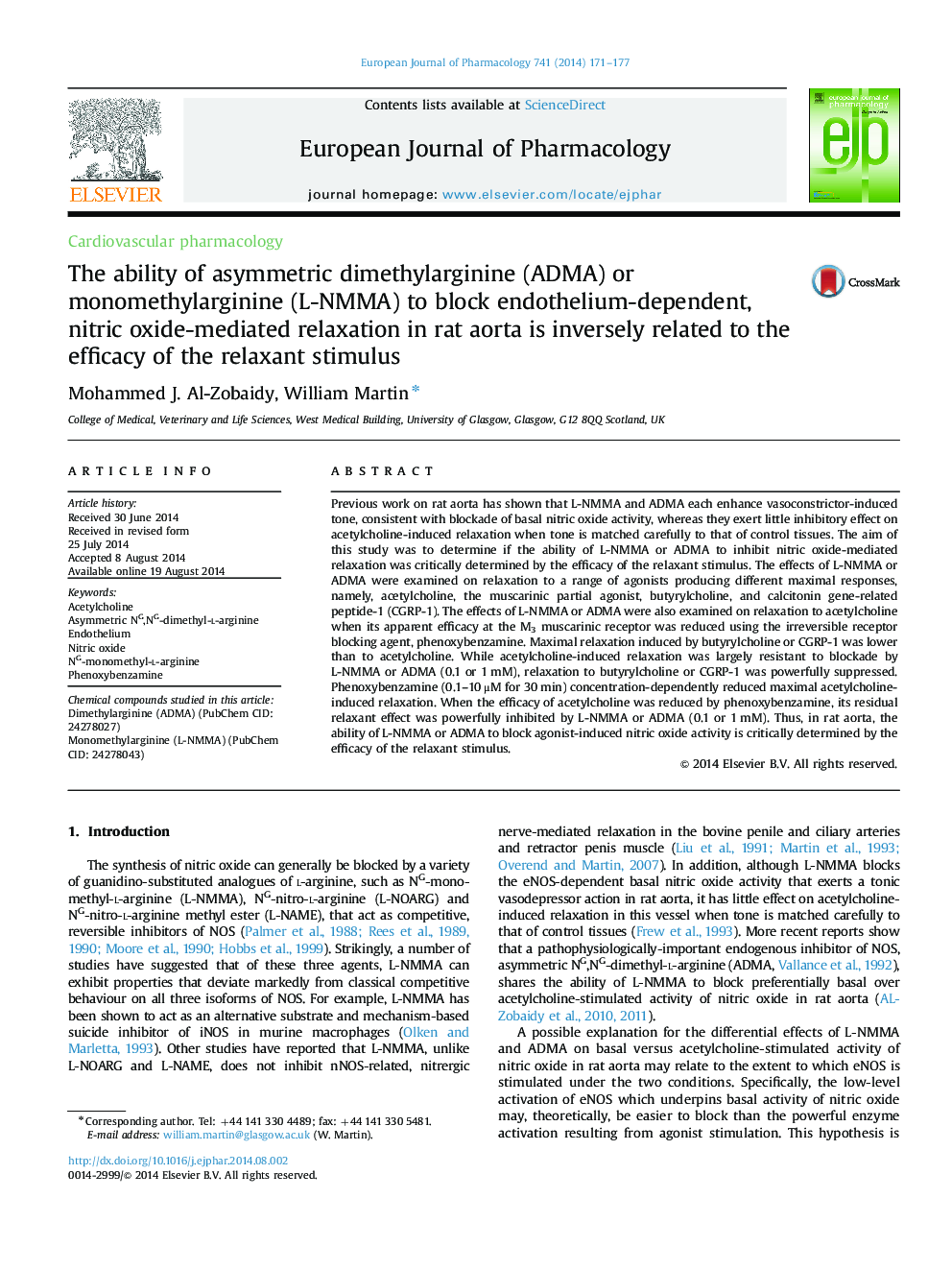| کد مقاله | کد نشریه | سال انتشار | مقاله انگلیسی | نسخه تمام متن |
|---|---|---|---|---|
| 5827645 | 1558940 | 2014 | 7 صفحه PDF | دانلود رایگان |
عنوان انگلیسی مقاله ISI
The ability of asymmetric dimethylarginine (ADMA) or monomethylarginine (L-NMMA) to block endothelium-dependent, nitric oxide-mediated relaxation in rat aorta is inversely related to the efficacy of the relaxant stimulus
دانلود مقاله + سفارش ترجمه
دانلود مقاله ISI انگلیسی
رایگان برای ایرانیان
کلمات کلیدی
موضوعات مرتبط
علوم زیستی و بیوفناوری
علم عصب شناسی
علوم اعصاب سلولی و مولکولی
پیش نمایش صفحه اول مقاله

چکیده انگلیسی
Previous work on rat aorta has shown that L-NMMA and ADMA each enhance vasoconstrictor-induced tone, consistent with blockade of basal nitric oxide activity, whereas they exert little inhibitory effect on acetylcholine-induced relaxation when tone is matched carefully to that of control tissues. The aim of this study was to determine if the ability of L-NMMA or ADMA to inhibit nitric oxide-mediated relaxation was critically determined by the efficacy of the relaxant stimulus. The effects of L-NMMA or ADMA were examined on relaxation to a range of agonists producing different maximal responses, namely, acetylcholine, the muscarinic partial agonist, butyrylcholine, and calcitonin gene-related peptide-1 (CGRP-1). The effects of L-NMMA or ADMA were also examined on relaxation to acetylcholine when its apparent efficacy at the M3 muscarinic receptor was reduced using the irreversible receptor blocking agent, phenoxybenzamine. Maximal relaxation induced by butyrylcholine or CGRP-1 was lower than to acetylcholine. While acetylcholine-induced relaxation was largely resistant to blockade by L-NMMA or ADMA (0.1 or 1 mM), relaxation to butyrylcholine or CGRP-1 was powerfully suppressed. Phenoxybenzamine (0.1-10 μM for 30 min) concentration-dependently reduced maximal acetylcholine-induced relaxation. When the efficacy of acetylcholine was reduced by phenoxybenzamine, its residual relaxant effect was powerfully inhibited by L-NMMA or ADMA (0.1 or 1 mM). Thus, in rat aorta, the ability of L-NMMA or ADMA to block agonist-induced nitric oxide activity is critically determined by the efficacy of the relaxant stimulus.
ناشر
Database: Elsevier - ScienceDirect (ساینس دایرکت)
Journal: European Journal of Pharmacology - Volume 741, 15 October 2014, Pages 171-177
Journal: European Journal of Pharmacology - Volume 741, 15 October 2014, Pages 171-177
نویسندگان
Mohammed J. Al-Zobaidy, William Martin,